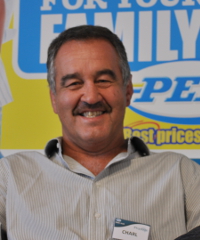Capturing lower-income consumers: A look at Pep’s model in Africa
South African-based Pepkor, which owns a number of global retail brands across three continents, recently sold a controlling 92.34% interest to retailer and manufacturer of household goods Steinhoff, for R62.8bn (US$5.64bn). During the financial year ending 30 June 2014, Pepkor reported revenues of R38.2bn ($3.43bn), with its operations in South Africa and neighbouring countries contributing 63% of this. Operations in the rest of the continent contributed 5%.
One of Pepkor’s most well-known brands is clothing and footwear retailer Pep, which operates in 11 African countries, including its home market South Africa. Pep primarily targets lower to middle-income consumers.
According to Pepkor Africa’s managing director, Charl Cronje, Pep has an aggressive expansion plan for the continent. He currently oversees Pep’s portfolio in six countries – Mozambique, Malawi, Zambia, Zimbabwe, Angola and Nigeria – and has recently visited East Africa to explore expansion opportunities.
The group is also building two training schools in Mozambique and Angola to improve managerial skills in these countries.
Diversification into cellular and financial products
With the success of its cellular division in South Africa, Pep has also started selling handsets in other African countries, including Zambia, Zimbabwe and Mozambique, with plans to roll this out into all its markets in due course.
“We already sell airtime in all the countries, excluding Angola, because we can’t get a licence yet,” explained Cronje.
He added the next step is to expand into financial services – such as providing money transfers, unsecured micro loans, funeral policies and other financial products. This division has already proven lucrative in South Africa, but Cronje explained it is a bit more difficult to roll this out in other countries due to requirements for specific financial and banking licences.
Fast-moving consumer goods – such as confectionery, hair and personal healthcare products – are also sold in Pep’s Africa stores, accounting for around 5% of turnover. These are sourced locally where possible.
Brand consistency vital, alongside customisation
According to Cronje, one of Pep’s strategies is to keep its brand as consistent as possible across all markets. “Whether you see Pep in Lagos, Luanda, Lusaka, or Parow (Cape Town), you have the same brand positioning, same corporate ID, same store layout, and mostly the same product offering.”
“I was quite surprised by some of the South African retailers in Nigeria. When I visited I could see they were getting desperate because their product mix and style was different to the brand in its [home] country. I think that is kind of a risky strategy.”
That said, Cronje added there is no ‘one size fits all’ model in Africa and business models will often have to be customised to certain market requirements.
“We don’t want to reinvent the wheel for Africa. We take the Pep business model with its assortment and store layout and design, and we copy as much as we can. However there comes a point where we have to customise.”
For example, in countries such as Nigeria there are import bans for products like footwear. Therefore Pep has to customise some of its product offerings.
Low margin, high volume
Pep’s business is based on a “low margin, high volume” model, explained Cronje, and caters for the lower-end of the market where price sensitivity is a reality. One strategy that Pep employs to ensure price credibility is to never discount the first price it offers consumers.
“Therefore, in Pep stores you will never find a special of 20% off for two days, or a ‘buy two and get the third one free’ deal. Whether you buy one, 10 or 100 – today, tomorrow or the day after – our first price is our best price, always.”
The idea behind this, explained Cronje, is to give customers “peace of mind” that whatever they purchase will always be at the best price the store can offer.
Pep trades in a variety of store formats. Not only has it expanded into markets such as Zambia and Nigeria with the development of modern shopping malls, but its stores have also been highly successful in standalone locations in less formalised retail areas.
“We don’t need a big parking area for cars. We don’t need the security of a shopping mall environment. The simplicity and the flexibility of our brand, will work in most locations. The only qualifier is there must be a lot of customers passing by our store.”


